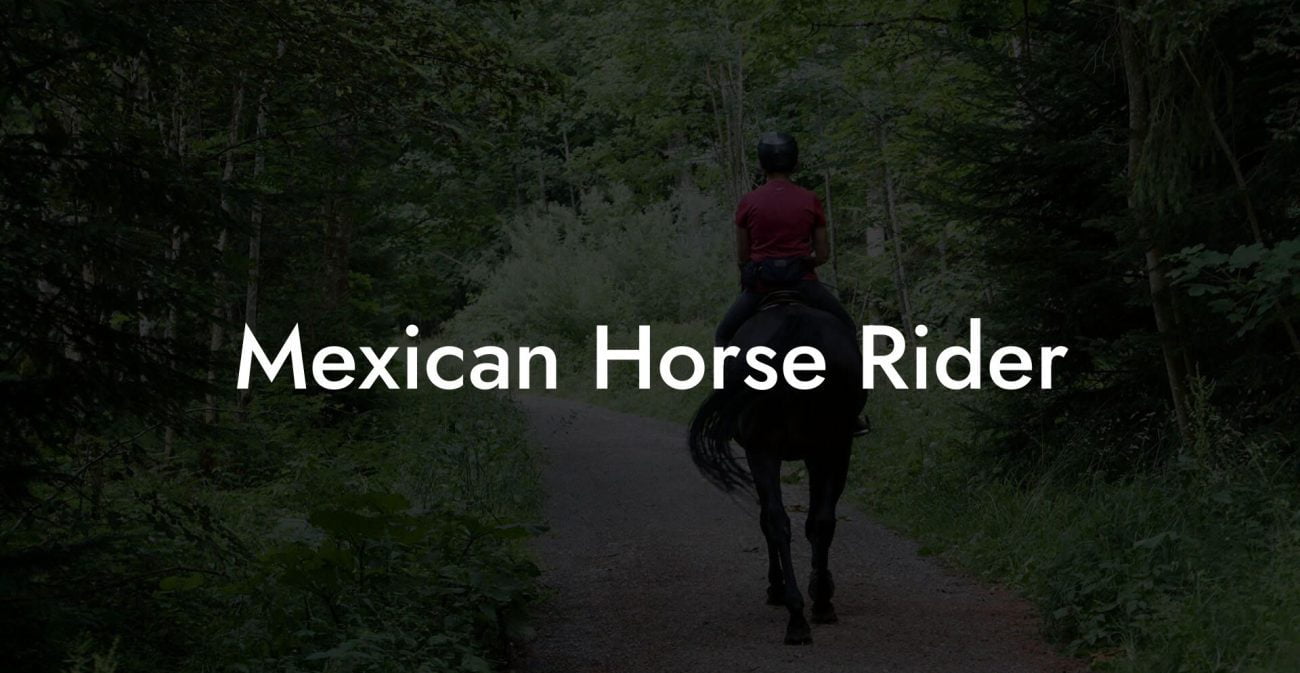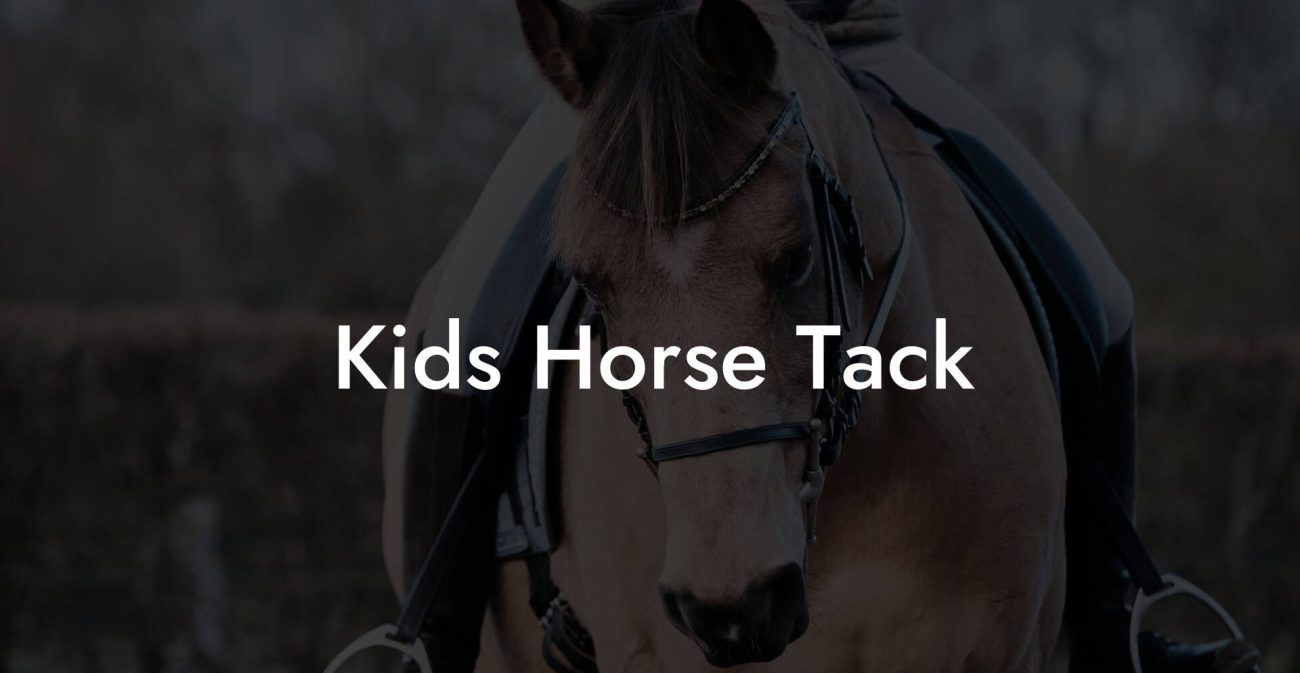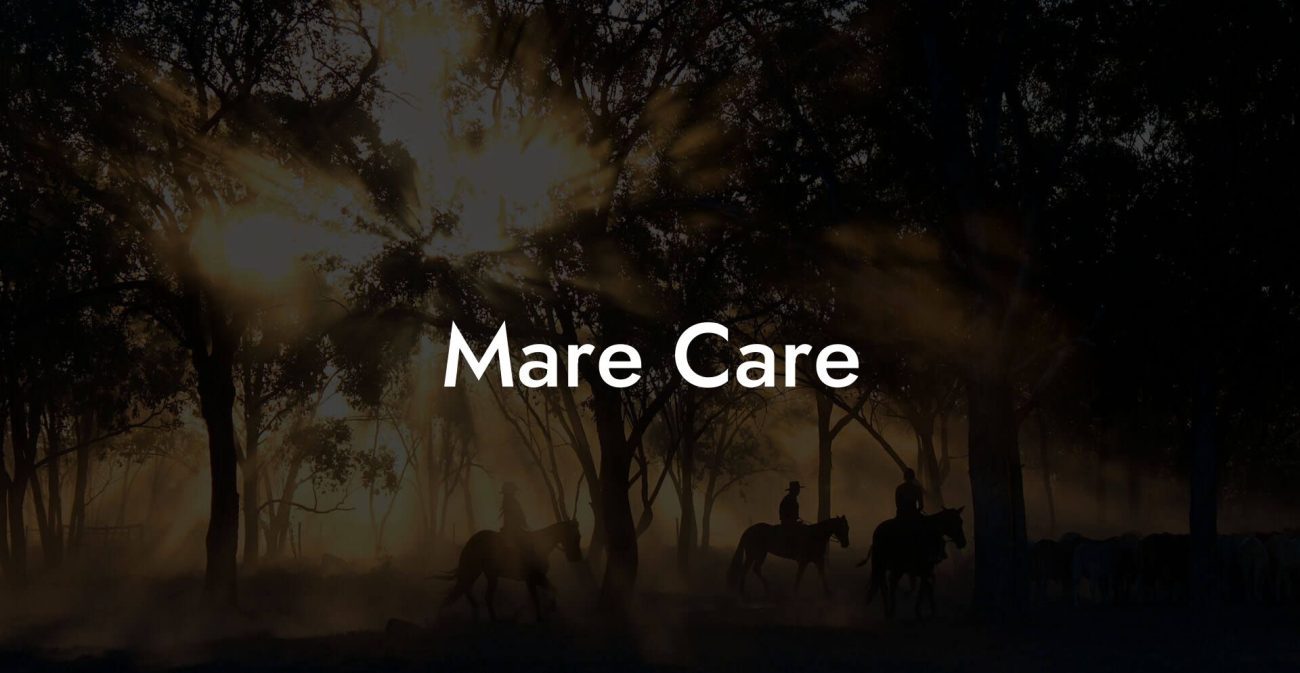Ever wondered where epic trails meet timeless equestrian traditions? The Iron Horse Trail is not just a stretch of scenic wonderland, it’s a journey through history that culminates in a modern haven for both trail enthusiasts and dedicated horse lovers. This guide will take you through every twist and turn, exploring exactly where the Iron Horse Trail starts and ends, while sprinkling in nifty tips on how to care for your equine companion along the way. Get ready for a ride that’s as informative as it is entertaining!
Quick Links to Useful Sections
- A Glimpse into the Iron Horse Trail Legacy
- Tracing the Steps: Where Does the Iron Horse Trail Begin?
- Where Does the Iron Horse Trail End?
- The Rich History Behind the Iron Horse Trail
- The Modern-Day Appeal: Why Gen Z and Millennials Love It
- Planning Your Journey on the Iron Horse Trail
- Mapping Your Route: Key Waypoints and Stops
- Equine Preparation: Essential Pre-Ride Checks
- Technology and Trail Apps
- Integrating Horse Care Along the Trail
- Nutrition and Hydration on the Go
- Regular Grooming Routines
- Managing Trail Fatigue
- Cultural and Natural Highlights Along the Iron Horse Trail
- Environmental Sustainability and Community Involvement
- Gear Up: Essential equipment for a Smooth Ride
- Seasonal Variations: When to Hit the Trail
- Local Communities and Equestrian Culture Along the Trail
- Innovative Techniques in Modern Horse Care
- Resources and Community Support: Your Next Steps
- Embracing the Journey: The Iron Horse Trail Experience
- FAQs About the Iron Horse Trail and Equine Care
- Your Adventure Begins Here: Embrace the Iron Horse Trail Experience
A Glimpse into the Iron Horse Trail Legacy
The Iron Horse Trail earned its nickname from the legendary locomotives that once powered the heartbeat of America’s railroads. Today, the renamed trail has evolved into a picturesque corridor for hikers, cyclists, and horseback riders alike. Stretching over hundreds of miles across diverse landscapes, the trail encapsulates America’s industrial past intertwined with the freedom of the modern outdoor lifestyle.
For adventure seekers and history buffs, the Iron Horse Trail offers an unexpected twist: it’s also a curated experience for those who cherish the art of horse care. While the trail’s origins lie in the era of robust steam engines and iron horses, its present-day incarnation invites riders to rediscover their connection with nature, history, and their own equine partners.
Whether you’re planning a weekend ride with your horse or setting out on a long-distance journey, understanding the trail’s starting and ending points is key. But more than that, knowing the history of this trail can deepen your appreciation of the landscapes, heritage sites, and hidden gems that pepper its route.
Tracing the Steps: Where Does the Iron Horse Trail Begin?
In many respects, the mystery of “where does the Iron Horse Trail start” is as compelling as the journey itself. Many maps and local lore point to a small historic town that once served as a bustling hub during the heyday of rail transport. This town, with its vintage architecture and rustic vibe, marks the official start of the trail.
At its inception, trail markers and waypoints invite you into a tale that weaves through reclaimed railway beds and repurposed sidings. As you start your journey, take a moment to appreciate the ingenuity of those who transformed this abandoned railway line into an eco-friendly pathway that connects diverse communities.
For equestrians, this starting point is more than just a pin on a map, it represents an opportunity to bond with your horse as you traverse landscapes that have been carefully preserved. Remember, the journey is as important as the destination, and starting off with a good warming-up routine for your horse can set the tone for the entire trail exploration.
Where Does the Iron Horse Trail End?
Much like its storied beginnings, the end of the Iron Horse Trail holds its own allure. Concluding in a vibrant community that encapsulates modern innovation with a nod to its historical past, the trail’s endpoint is a celebration of nature, art, and the culture of outdoor adventure.
As you approach the finish line, those well-worn tracks give way to local artisan markets, cozy eateries, and lodgings that cater especially to adventurers and their equine friends. This endpoint is often a launchpad for further explorations, maybe a bike ride through local vineyards or a walk through a nearby park where modern amenities meet rustic charm.
The trail’s terminal station also underscores the importance of maintenance, not just for the pathways and historical sites, but for the well-being of your horse. A good cool-down routine, proper grooming, and ensuring that your animal has plenty of water after a long ride are all key to ending on a high note.
The Rich History Behind the Iron Horse Trail
To fully appreciate the starting and ending points of the Iron Horse Trail, you first need to immerse yourself in its vibrant history. Originating as a critical rail conduit in the early 20th century, this trail was once the pulsing nerve center that connected remote towns with industrial powerhouses.
With the decline of railroads, many of these tracks fell into disuse. Yet, in a brilliant stroke of reinvention, communities banded together to repurpose the old lines, transforming them into recreational trails that celebrate the era of the iron horse. As you ride along the trail, every mile tells a story, from the clattering sounds of passing locomotives to the rusting of once-mighty engines now overtaken by nature.
This narrative is not only historical, it’s a blueprint for modern conservation. By reusing existing pathways, communities have minimized environmental impacts, embraced sustainable practices, and provided a space where history and nature coexist harmoniously.
The Modern-Day Appeal: Why Gen Z and Millennials Love It
The Iron Horse Trail resonates especially with Gen Z and millennial adventurers who relish the blend of history, sustainability, and the raw power of nature. This trail isn’t just a route; it’s an experience that taps into a deep yearning for authenticity.
In today’s fast-paced world, taking the time to travel a historical trail offers a genuine connection with the past, a break from digital monotony, and a serene space that invites equestrian exploration. Whether on foot, bike, or horseback, the trail’s vibe is all about rediscovering simplicity while reconnecting with a storied past.
And let’s not forget the crucial aspect of horse care. Millennials and Gen Z who ride often prioritize the well-being of their animals, ensuring they have proper gear, nutrition, and rest on long trail rides. This guide isn’t just about geography, it’s a handbook for how to care for a horse while indulging in the magic of the Iron Horse Trail.
Planning Your Journey on the Iron Horse Trail
Planning an adventure on the Iron Horse Trail requires a balanced blend of logistics, historical curiosity, and equine care know-how. Whether you're packing up for a multi-day journey or a day trip, here are some essential tips to ensure your experience is both epic and safe.
Mapping Your Route: Key Waypoints and Stops
The Iron Horse Trail brims with markers and historical landmarks that provide natural stopping points along your ride. Consider the following when mapping your route:
- Historic Landmarks: Look for old train stations, restored depots, and interpretive centers that offer context and fascinating narratives about the trail’s past.
- Rest Stops: Identify locations where you can safely dismount, stretch your legs, and let your horse have a water break. Many local guides highlight pit stops that double as serene picnic spots.
- Local Eateries and Accommodations: Some towns along the trail offer rustic inns and farm-to-table restaurants that cater specifically to trail enthusiasts.
- Scenic Vistas: Plan for stops at lookout points where you can genuinely appreciate the sprawling landscapes and catch your breath.
Using a reliable mobile mapping app that supports offline mode (in case you lose signal on remote stretches) can make all the difference. Detailed GPS mapping is a must for tracking both your progress and your horse’s well-being.
Equine Preparation: Essential Pre-Ride Checks
Before you set out, a thorough checklist for your horse is non-negotiable. Here are some essential pre-ride checks:
- Ensure your horse’s saddle and tack are securely fastened and fit properly.
- Check the condition of the horseshoes and hooves, maintenance here can prevent injuries on rugged parts of the trail.
- Make sure to pack enough water and electrolytes for both you and your horse.
- Inspect your riding gear for comfort and functionality: a well-fitted helmet, boots, and weather-appropriate attire are vital.
With a few minutes of proper preparation, you can sidestep many common issues that might otherwise interrupt your adventure along the Iron Horse Trail.
Technology and Trail Apps
Leveraging technology can make trail navigation and horse care easier than ever. Many apps offer features like real-time tracking, weather updates, and even community sharing functions where fellow adventurers share tips. These tech-savvy tools are especially popular among Gen Z and millennials, who rely on their smartphones to remain connected even in remote settings.
Don’t underestimate the power of a well-charged phone and a portable power bank. Whether you’re using them for mapping or connecting with nearby riders on social media, these gadgets keep your journey both safe and fun.
Integrating Horse Care Along the Trail
While exploring the Iron Horse Trail is undeniably thrilling, the journey is incomplete without focusing on your horse’s care. Riding long distances can be as taxing on your equine companion as it is on you. Here, we delve into contemporary, tried-and-true methods for keeping your horse in tip-top shape along the way.
Nutrition and Hydration on the Go
Just like you, your horse needs constant replenishment when you’re on the trail. Carry a supply of specialized equine feed that offers high energy and balanced nutrition. Modern equine nutrition blends traditional grains with natural supplements to keep your horse energized, especially on extended rides. Pack ample water supplies and perhaps an electrolyte mix for those scorching days under the open sky.
Remember, signs of dehydration or fatigue in horses can sometimes be subtle. Keep an eye out for a loss of shine in their coat or a lack of enthusiasm during breaks, and adjust feed and water intake accordingly.
Regular Grooming Routines
Long rides on diverse terrain can cause dusty coats and minor scrapes that, if left unchecked, might lead to skin issues. Establish a grooming routine that includes brushing, checking for ticks, and a quick inspection of the horse’s legs and hooves after each stop. For a millennial rider, a portable grooming kit is as essential as your phone charger. The kit should include a brush, hoof pick, and soothing lotions that can help prevent irritations from dust and debris.
Managing Trail Fatigue
Even the sturdiest horse can experience trail fatigue, especially on days with long legwork. Schedule strategic rest breaks where both you and your horse can recuperate. These breaks not only help in rehydration and feeding but also provide moments to check for signs of muscle strain or overheating. A cool-down period is vital, some riders even opt for a light massage or a gentle walk once you reach a scenic stop.
Integrating these horse care practices into your itinerary ensures that your companion remains enthusiastic and healthy. It’s all about balance: managing your adventure so you can create memories without compromising well-being.
Cultural and Natural Highlights Along the Iron Horse Trail
The Iron Horse Trail is not just a route; it’s a living gallery showcasing nature, culture, and history intermingled in a vibrant tapestry. Riders will find themselves passing through quaint towns where local festivals celebrate the heritage of the railroad era, and art installations breathe new life into forgotten stories.
In these enclaves, you can uncover hidden murals that depict scenes from the golden age of railroads, pop into family-run diners offering farm-fresh meals, or explore farmers’ markets brimming with local produce. Each stop is an opportunity to connect with community, share a laugh, and swap stories about trail adventures.
The interplay of urban revival and rustic landscapes creates a backdrop that perfectly suits both the historian and the free-spirited equestrian. For many Gen Z and millennial travelers, the Iron Horse Trail represents a unique blend of authentic experiences and sustainably-minded tourism.
Environmental Sustainability and Community Involvement
As you trace the Iron Horse Trail from start to finish, it’s impossible to overlook its commitment to environmental sustainability. Communities along the route have worked tirelessly to preserve natural habitats, restore historical sites, and ensure that every rider, whether on foot, bike, or horseback, can enjoy an unspoiled environment.
Local councils and environmental groups regularly organize clean-up drives, native tree planting events, and workshops on sustainable trail usage. These initiatives resonate well with eco-conscious Gen Z and millennial audiences who are passionate about minimizing their carbon footprint.
For those who care deeply about horse welfare and environmental health, participating in community projects not only enriches your experience but also gives back to the very landscapes you traverse. Look for volunteer opportunities posted on local community boards or via social media groups dedicated to trail conservation.
Gear Up: Essential equipment for a Smooth Ride
Having the right equipment is the secret sauce to a successful journey on the Iron Horse Trail. Both you and your horse need a well-curated kit that balances practicality and comfort. Here’s a rundown of must-have gear:
- For You: A durable yet stylish helmet, moisture-wicking clothing, and a lightweight backpack with hydration reserves are key. Don’t forget a compact first-aid kit and a robust power bank to keep your devices charged.
- For Your Horse: A well-fitted saddle, quality reins, and padded blankets can make a world of difference. Carry grooming tools, a portable water bowl, and extra supplies like fly spray. Modern equine care also includes smart trackers that monitor your horse’s activity and health status.
- Tech Essentials: Trail navigation apps, GPS device, and emergency contact systems ensure you’re never far from help when venturing into remote areas.
Proper equipment is an investment in both safety and enjoyment, ensuring that every journey along the Iron Horse Trail is smooth, engaging, and free of avoidable mishaps.
Seasonal Variations: When to Hit the Trail
Timing can dramatically alter your experience on the Iron Horse Trail. Each season brings its unique charm and challenges, so planning your ride according to the weather is essential for both human and horse comfort.
Spring: Experience the revival of nature as the landscape transforms with blooming wildflowers and fresh greenery. While spring offers milder temperatures, be wary of muddy trails after recent rains, both you and your horse will appreciate good traction on dry footing.
Summer: Long, sunny days make for fantastic riding conditions, but also the need for extra hydration and sun protection. Early morning rides are a favorite among riders, as the heat tends to build up later in the day. Keep an eye on your horse for signs of overheating and schedule plenty of breaks.
Autumn: With crisp air and vivid fall foliage, autumn is arguably the most inspirational time to traverse the trail. The cooler temperatures allow for longer rides with less strain. Trail markers often highlight seasonal events and harvest festivals in nearby towns, offering an extra dose of local culture.
Winter: While the trail transforms into a snowy wonderland, be mindful that cold conditions require additional gear for both you and your horse. Extra layers, thermal equipment, and precautions against icy patches are critical. Winter riding, although more challenging, offers a unique tranquility and a completely different perspective on the landscape.
Matching your gear and riding schedule to the seasonal climate not only enhances your experience but also guarantees the safety and comfort of your cherished four-legged friend.
Local Communities and Equestrian Culture Along the Trail
One of the Iron Horse Trail’s most engaging features is the connection it fosters among the communities that dot its length. These communities take pride in their equestrian culture, celebrating centuries-old traditions alongside cutting-edge horse care practices.
From local stables that host riding clinics to small-town festivals dedicated to horses and trail riding, there’s always an opportunity to learn and share. Young riders often find mentors in these communities, picking up pro tips on everything from grooming techniques to saddle adjustments.
Engaging with local experts, whether during a pit stop at a historic depot or while lounging at a community fair, deepens your understanding of both the trail’s history and the evolving practices of modern horse care. These interactions transform your journey into a living classroom where history, tradition, and innovation converge.
Innovative Techniques in Modern Horse Care
As explorers of both historic routes and equine excellence, modern riders are blending technology with traditional horse care methods. The Iron Horse Trail isn’t just about rustic charm, it’s a playground where cutting-edge equestrian techniques take center stage.
Smart gadgets like wearable trackers for horses monitor everything from heart rate to GPS location. These devices, paired with mobile apps, allow you to check on your horse’s performance and well-being in real time. Innovative saddle designs and ergonomic tack further improve comfort during long rides, reducing the risk of injury.
Even nutrition has had its high-tech upgrades. Many riders now consult with equine nutritionists who use data analytics to craft personalized feeding regimens that ensure peak performance. Integrating these innovative techniques into your routine makes your trail experience not only smoother but also more attuned to the precise needs of your horse.
Embracing these modern approaches during your voyage along the Iron Horse Trail reinforces the bond between tradition and innovation, epitomizing the union of past and future in equestrian pursuits.
Resources and Community Support: Your Next Steps
As you set your sights on the Iron Horse Trail, connecting with communities and educational resources can enhance every aspect of your journey. Whether you’re a seasoned rider or a curious novice looking to learn how to care for your horse on the go, the wealth of resources available is nothing short of inspiring.
Explore local equestrian clubs, join online forums, and subscribe to podcasts that delve into sustainable trail riding and modern horse care. Many communities along the trail offer guided tours, workshops, and meetups that can help you fine-tune both your riding skills and your animal care practices.
Beyond organized resources, social media platforms like Instagram, TikTok, and YouTube have become vibrant hubs for sharing tips, success stories, and even humorous mishaps from the trail. Engage with these communities to swap advice on everything from saddle maintenance to DIY grooming hacks.
And if you ever feel overwhelmed, local donor centers and community-based equine rescues are often eager to lend a hand, providing both practical support and the warm camaraderie that makes every trail journey feel like a shared adventure.
Embracing the Journey: The Iron Horse Trail Experience
Ultimately, the Iron Horse Trail is more than a destination, it’s an evolving journey filled with discovery, history, and a love for equestrian tradition. Every mile offers a unique blend of challenges and rewards that require a harmonious blend of physical endurance, mental focus, and dedicated horse care.
With its storied past and vibrant present, the trail invites you to rediscover what it means to journey through nature’s playground with your best equine pal by your side. Whether you’re checking off a bucket list, reconnecting with historical landscapes, or simply enjoying an out-of-office moment with your horse, each step is an affirmation of resilience, adventure, and a passion for the outdoors.
So strap on your boots, adjust your saddle, and set your course by understanding exactly where the Iron Horse Trail starts and ends, a journey that promises history, heart, and healthy horse care along every twist and turn.
FAQs About the Iron Horse Trail and Equine Care
Here are some of your most frequently asked questions, everything you need to know about the Iron Horse Trail and how to ensure your horse remains healthy and happy along the ride.
1. Where does the Iron Horse Trail officially start?
The trail traditionally starts in a historic town that once served as a major rail hub. This location acts as the gateway from which the trail extends through various scenic and culturally rich regions.
2. What is the endpoint of the Iron Horse Trail?
The trail concludes in a vibrant community that seamlessly blends old-world charm with modern amenities. Expect to find local markets, eateries, and cozy accommodations that cater to adventurers and equestrians alike.
3. Can I ride my horse along the entire Iron Horse Trail?
Yes, many sections of the Iron Horse Trail are designed to accommodate horseback riding. However, it’s important to check local regulations and ensure your horse is properly prepared for longer rides.
4. What essential equipment do I need for a trail ride?
Essential gear includes a well-fitted saddle, quality riding apparel, navigation tools, and a portable grooming kit for your horse. For you, always carry a mobile map, hydration supplies, and tech gadgets like a fully charged smartphone or GPS device.
5. How should I care for my horse during long rides?
Prioritize regular grooming, hydration, and rest breaks. Monitor your horse’s condition for signs of fatigue or overheating, and always have essential supplies like electrolytes and a basic first-aid kit on hand.
6. Which season is best for riding the Iron Horse Trail?
Each season offers a unique charm. Spring and autumn are very popular due to mild temperatures and vibrant landscapes, while summer provides long daylight hours, just be sure to stay prepared for higher temperatures.
7. Are there community resources to help new riders?
Absolutely. Local equestrian clubs, online forums, and social media groups offer extensive support and advice on everything from navigation to specialized horse care techniques.
8. Is the trail suitable for beginner riders?
Yes, many sections are beginner-friendly, but it’s always wise to plan your route carefully, especially if you’re new to long rides. Consider joining group rides or guided tours for added safety.
9. How can I ensure my horse stays fit for trail rides?
Regular exercise, proper nutrition, and routine check-ups from an equine specialist will keep your horse in peak condition. Remember, a well-cared-for horse is the cornerstone of a safe and exhilarating trail ride.
10. What local attractions should I not miss along the trail?
From historic depots and art installations to artisan shops and local food festivals, every stop along the trail offers a unique glimpse into regional culture and culinary delights.
Your Adventure Begins Here: Embrace the Iron Horse Trail Experience
The Iron Horse Trail is a remarkable journey that invites you to blend history with modern outdoor adventure, all while deepening your bond with your equine companion. As you ride from the iconic starting point in a storied rail town to the energetic, culturally rich endpoint, every turn of the trail offers lessons in resilience, environmental stewardship, and the art of horse care.
Embrace the challenges of navigation, the thrill of uncovering historical secrets, and the joy of caring for your horse with innovative practices. This journey is more than a mere trek, it’s a celebration of the past and a bold leap into the future of sustainable, adventurous living.
So gear up, harness your curiosity, and embark on the adventure of a lifetime along the Iron Horse Trail. With each step, ride, and pause, you’re creating a story of exploration, care, and connection that transcends generations. The journey of a thousand miles, and countless memories, starts at the first trail marker. Enjoy every moment, and let the trail’s spirit invigorate both your passion for adventure and your commitment to equine excellence.
Whether you're a history buff, nature lover, or a devoted horse enthusiast, the Iron Horse Trail offers you the perfect setting to explore, learn, and create lasting memories. Enjoy the ride, and may every mile inspire you to care more deeply, not only for your horse but for the timeless landscapes that define this extraordinary journey.













